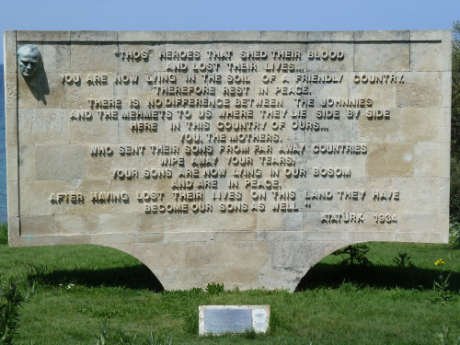
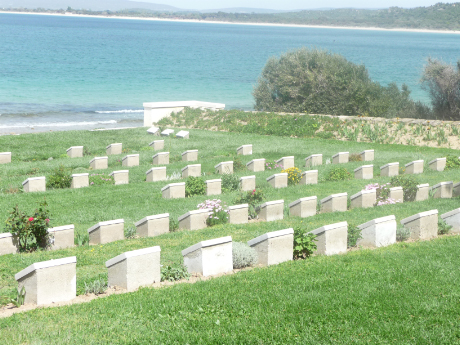
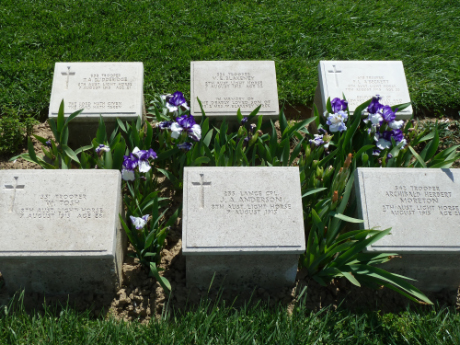

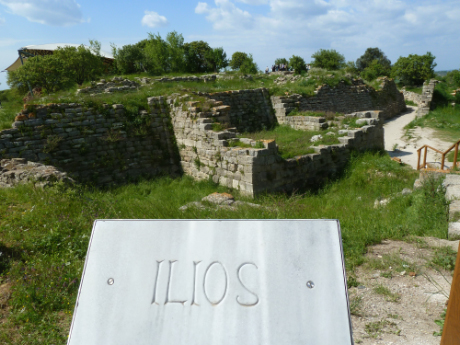
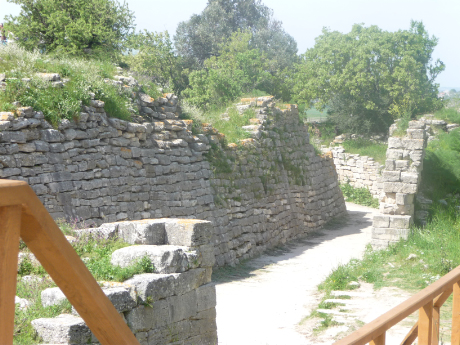
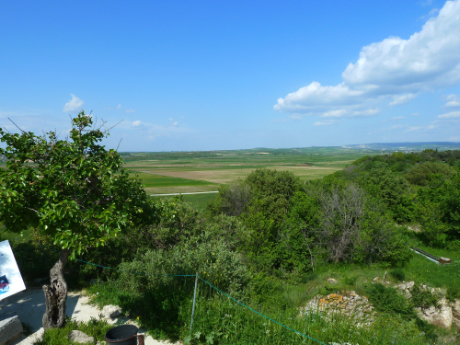
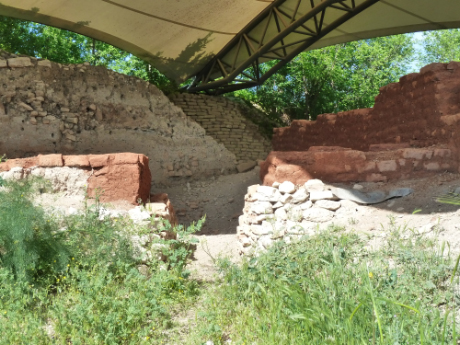

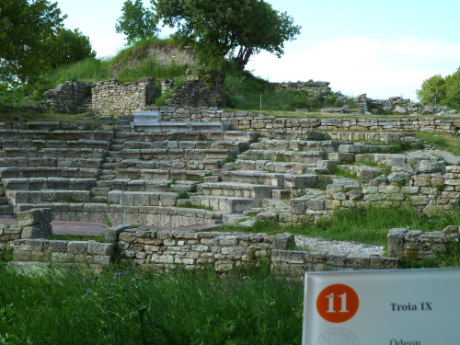
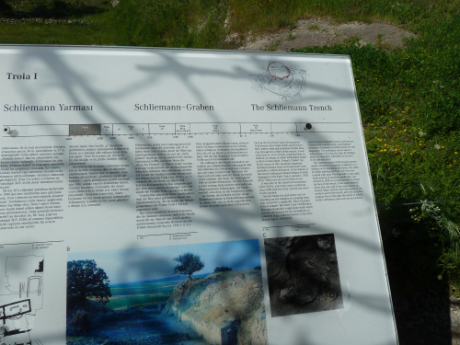
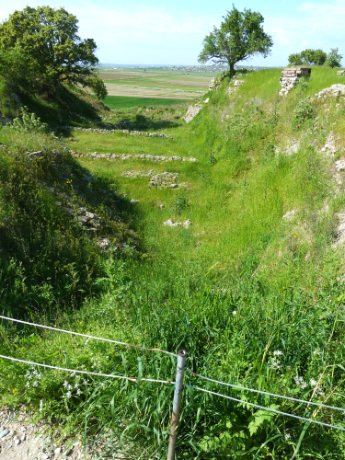

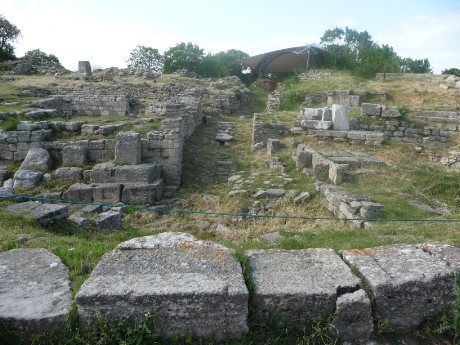
If there had actually been a Trojan Horse, this is the road and the gate through which it would have been pulled.
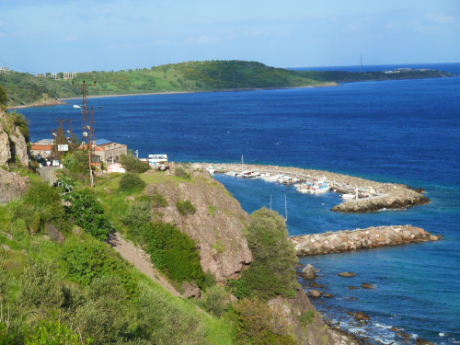
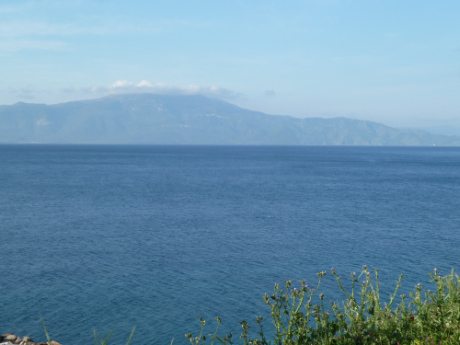
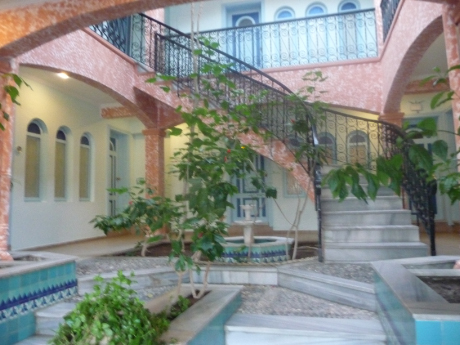
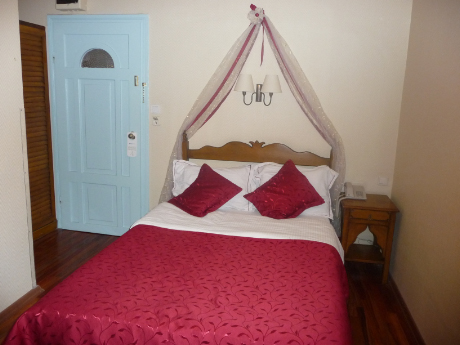
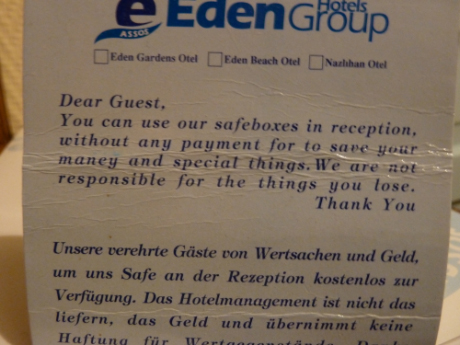

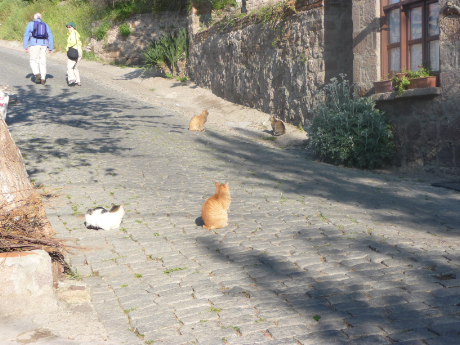
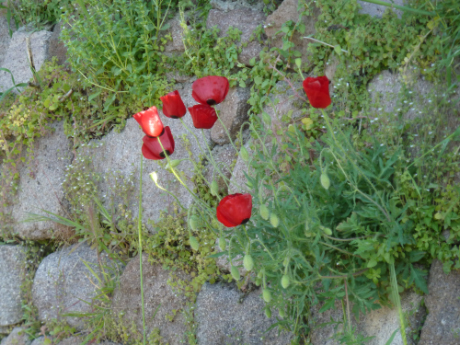
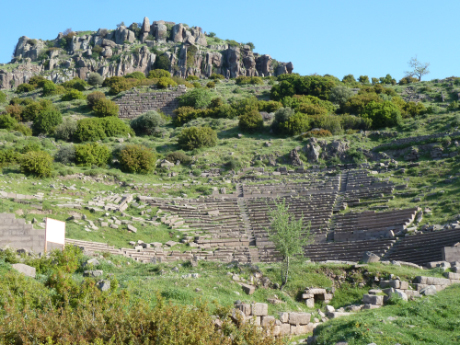
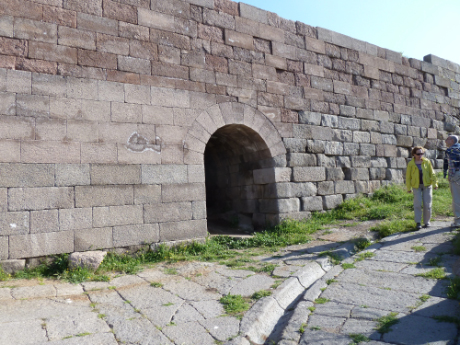
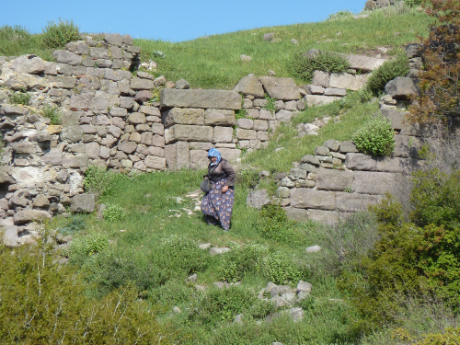
Gallipoli and Troy |
| Istanbul 1 | Istanbul 2 | Troy and Assos | Pergamon | Ephesus | Turquoise Coast | Antalya and Perge | On the Road | Cappadocia | Ankara |
| After we left Istanbul the weather greatly improved, much to our relief. Our next stop was the WWI battlefield of Gallipoli, where the Turks, led by Ataturk, repelled the Australian and New Zealand (ANZAC) forces trying to take the beach. | ||
 |
 |
|
| At the entry to the memorial is a copy of a letter that Ataturk sent in 1934 to the families of the ANZAC forces killed there. | The cove is very quiet and the rows of memorials facing out to the sea are very moving. |
|
 |
 |
|
| This is not a graveyard (the bodies are not buried here) but the memorial plaques are maintained as though it were, with flowers planted at each one. |
There is a general memorial that includes a tribute to the Unknowns who fought there. | |
 |
 |
|
| Then we crossed over to the Asian side of Turkey by ferry and it was on to Troy (aka Ilios or Ilium). | Troy is actually the site of a number of different cities built one on top of another. Mostly what remains are walls and Gökhan the archaeologist could tell us all about what kind of walls were built when and how a road with a curve like this one helped to deter invaders. | |
 |
 |
|
| In Homer's time, this plain would have been mostly water and during the trojan War the Greek ships would have been drawn up on the beach. Thousands of years of silting by the rivers have moved the shoreline miles away. |
This is probably the site of the Troy that fought the Trojan War. | |
 |
 |
|
| These are the ruins of the earliest Troy, from around 3000 BC. You can see how the stones are mostly stacked upon each other rather than being fitted together. |
One of the last things to be built on this site was the Hellenistic city of Troy (1st century BC) | |
 |
 |
|
| Heinrich Schliemann is credited with discovering the site of Troy, which most authorities had dismissed as mythical. He was not, however, an archaeologist but rather a treasure-hunter looking for valuable artifacts. His first trench, therefore, ran right through several important layers and he kept no notes about where he had found things. He did, however, find golden treasures. The original "Schliemann Trench" is still there, but it does not include the Homeric city of Troy; Schliemann had mis-identified a much earlier city as Homeric. |
||
 |
If there had actually been a Trojan Horse, this is the road and the gate through which it would have been pulled. |
|
| When done properly, the archaeology is much more complex, with later layers sometimes found under earlier ones and all of them need to be carefully noted and labeled. |
||
 |
 |
|
| We spent the night at Assos, a small village along the Aegean Coast of Turkey. | Although the mainland belongs to Turkey, most of the islands belong to Greece. This is the Greek Island of Lesbos, right off the coast of Assos. |
|
 |
 |
|
| Our hotel was beautifully decorated with tiles and metalwork. In the morning we woke to the sound of birds in the foyer. The rooms were, shall we say, cozy. | ||
 |
 |
|
| In theory, almost everyone in Turkey learns English as their second language. In practice, here, as in China, some of the signs we saw had interesting English translations. |
||
 |
 |
|
| Cats were EVERYWHERE in Turkey. A few had owners but mostly they seemed to be scavengers. Like all cats, they glared at you if you walked where they wanted to be. |
We were there at just the right time of year for wildflowers and greenery. We saw these poppies everywhere and all of the land seemed so lush. A month or so later this would all be brown. | |
 |
 |
|
| On the way out we stopped at the remains of the Theater of Assos. You can tell that it is a Greek theater (rather than a Roman one) because it is contoured to the hillside. Every Greek city in antiquity had a theater for drama and for public meetings. |
This gate beside the theater is a place where St. Paul walked during his missions in Asia Minor. | |
 |
||
| Assos is a village in the countryside, so we should not have been surprised to see a woman collecting wild herbs for dinner, as generations of people have done in this same place. |
||
 |
 |
 |